October Newsletter 2014
EXCITING NEWS!!
Do you know as a member of the Paso Robles Sports Club you are entitled to special member benefits with local participating businesses? It is the Paso Robles Sports Club Member Benefit Program.
Currently the following local businesses are providing discounts to our members:
Hope Family Wines: 20% off all wines
Vina Robles Winery: Complimentary Wine tasting and 10% off all wines
The Flower Lady: 10% off all floral décor and arrangements
Bahama Bay Tanning: 10% off salon services and merchandise
Vivant Fine Cheese: 10% off fine cheese and store products
#1 Nail Salon: 10% off nail services
Chevron: 10% off carwash Ramada and Woodland stations
Spinnaker Financial: Complimentary credit report upon loan approval
Alliance Board Company: 10% off all store merchandise
Leahandah Creative: 10% discount on all print/web/digital
Just show your membership card at any participating business to receive your agreed discount. Thank you for supporting your local hometown business community.
*If you have any questions regarding this new program or have interest in becoming a benefit partner or referring a local business to our program please contact Lisa Brownie at [email protected].
Business Partner of the Month

This month the Paso Robles Sports Club would like to thank Hope Family Winery for their participation in our Membership Benefit Program by featuring them as our Business Partner of the month.
The Hope Family arrived in Paso Robles in 1978 in search of land and new opportunity. As one of the pioneering families of this distinctive wine community, the Hope Family is dedicated to sustainable farming and making wines that are delicious, accessible and memorable. Still family owned and operated, Hope Family Wines now makes five individual brands: Liberty School, Treana, Candor, Troublemaker and Austin Hope.
The Treana and Hope Family Wines tasting Cellar is a modern take on a rustic barrel room. Offering samples of regular blends along with stunning views of the Hope Family Vineyard. Located just off Highway 46 West come and enjoy the latest vintages of the Hope Family Wine Vineyard. Paso Robles Sports Club sells many of their wines including, Troublemaker and Liberty School.
As a generous participant in our Member Benefit Program, Hope Family Wines agrees to provide our club members with a 20% discount on all Hope Family Vineyard wines.
Hope Family Wines
1585 Live Oak Rd.
Paso Robles, CA 93446
805-238-4112
 Kids Dance
Kids Dance
Wednesdays starting October 8th 3:30 - 4:15 pm (5-7 year old) and 4:15 - 5 pm (8-10 year old). $60 for 5 weeks of instruction with a small performance for the families at the end. We will be exploring all different styles of dance! Contact [email protected] to sign up!
Fitness Corner with Dr. Andre Acebo
Chiropractor and strength coach
How much weight should I lift? This is a very common question most trainers are asked. Here's my answer: first start with your goals and current training status, then rather than focusing on the amount lifted, think in terms of repetitions (reps). 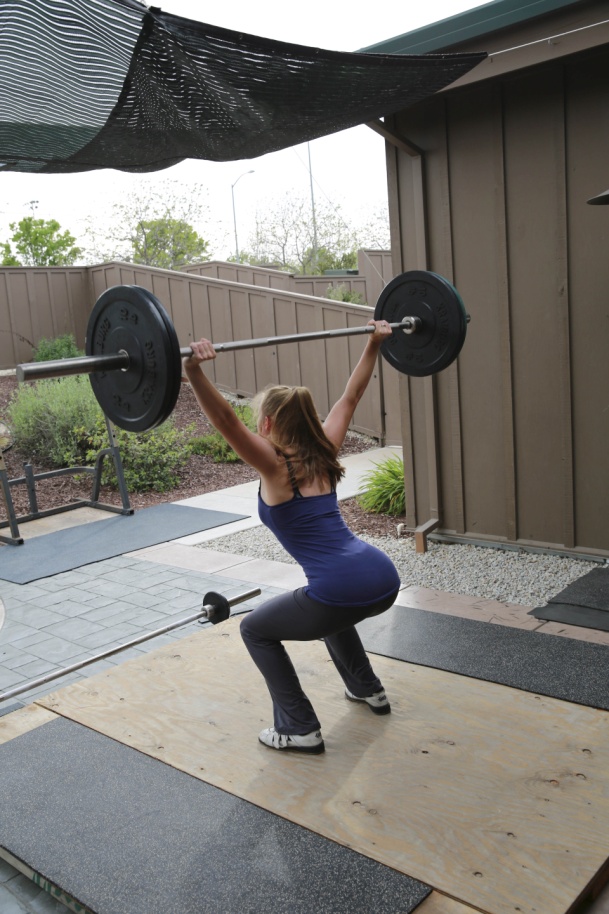 If your new to resistance training or coming back from an extended layoff (out of shape), regardless of your goals, you need to build muscular endurance and core stability first. That means higher reps (15 to 20) with a slow tempo. The slow tempo is especially important during the eccentric or negative part of the exercise. Remember that higher reps necessitate lighter weights and fewer sets. Posture and your exercise form are paramount at this stage. You can follow this plan for 4 to 12 weeks.
If your new to resistance training or coming back from an extended layoff (out of shape), regardless of your goals, you need to build muscular endurance and core stability first. That means higher reps (15 to 20) with a slow tempo. The slow tempo is especially important during the eccentric or negative part of the exercise. Remember that higher reps necessitate lighter weights and fewer sets. Posture and your exercise form are paramount at this stage. You can follow this plan for 4 to 12 weeks.
After you have a "stamina base", you can look at your goals to decide how to continue lifting. For muscular development, you should train in the 8-12 rep range with a slower tempo. You should lift moderate loads with this goal. If your goal is strength & power for sports like tennis, football, or soccer, some of your training must be in the 1-6 rep range, with a faster tempo. You can lift much more weight at this low rep range, so your weights would be considered heavy.
Many sports require all three goals of muscular endurance, hypertrophy, and power. These athletes will train for each goal during different cycles throughout the year.
If you are a woman, with the goal of dropping 20 lbs and toning up, you should still follow these general progressions. I have observed, and the fitness industry has concluded, that most women don't lift heavy enough to make any real change in their body composition or shape.
It is important to cycle your training to include periods of light, moderate, and heavy lifting. You can literally shape your body and fitness to your liking.
We are here to help! Please email me if you would like to set up a consultation with myself or one of our trainers! [email protected]
Keep Training,
Doc
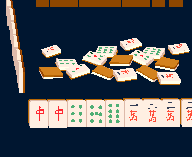 Learn to play Mah Jongg
Learn to play Mah Jongg
Ladies, come and learn the fun tile game of Mah Jongg (ancient Chinese tile game also called The Game of Sparrows). There are still spots available in our class being held on October 13 @ 2PM at Paso Robles Sports Club. Long time member, Neeltje Crossland, will be facilitating the class. To register or find out more about Mah Jongg, please call Neeltje @ (805)550-0580.
PRSC AQUATICS:
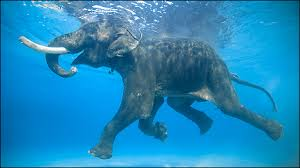 --Come check out our Family AquaFit! It is held every Thursday at 4:30 pm in the covered pool.
--Come check out our Family AquaFit! It is held every Thursday at 4:30 pm in the covered pool.
--Swim lessons are an important way to keep your kids water safe! We offer swim instruction for all ages and levels of experience year round! Learn to swim or improve your stroke with a qualified WSI instructor. Both private and semi-private formats are available. Call 805-239-7397 to schedule today!
Kids Fun Fact:
Did you know??
Elephants can swim as many as 20 miles a day — they use their trunks as natural snorkels!
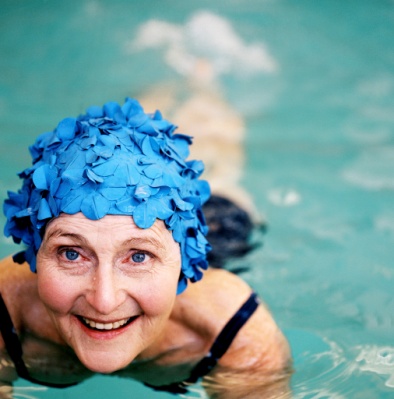 SWIM for your Health!!
SWIM for your Health!!
• An hour of vigorous swimming will burn up to 650 calories. It burns off more calories than walking or biking.
• Swimming strengthens the heart and lungs.
• Swimming works out all of the body’s major muscle groups.
• Swimming helps reduce stress.
• Water’s buoyancy make swimming the ideal exercise for physical therapy and rehabilitation or for anyone seeking a low-impact exercise.
• Swimming is a great cardiovascular exercise because you are moving against the water’s resistance, which is over ten times that of the air.
Congratulations
 Congratulations to our Paso Robles Sports Club member Dianne Emley whose latest Random House novel, “The Night Visitor”, is a paranormal thriller. Inspired by a personal tragedy, it is set in Pasadena, CA as is her LA Times Best Seller Nan Vining Detective Series.
Congratulations to our Paso Robles Sports Club member Dianne Emley whose latest Random House novel, “The Night Visitor”, is a paranormal thriller. Inspired by a personal tragedy, it is set in Pasadena, CA as is her LA Times Best Seller Nan Vining Detective Series.
Dianne and her husband Charlie frequent the club and you may meet her in the yoga, cardio, or weight rooms. You can meet her immediately through her website www.dianneemley.com to check out her latest or order directly from Amazon for $2.99 to enjoy.
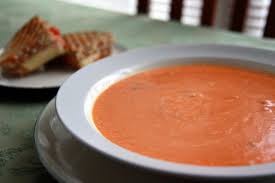 Cafe News:
Cafe News:
We are in full swing into fall! Time for some fresh tomato soup from our own garden paired with a panini sandwich; the perfect combo! We also have some new red and white wines available. Both River Star Red Rocket Cabernet and Zinfandel and Karma Side View North Coast Chardonnay have been well received.
There will be a Chili Cook off this month. Get your crock pots ready! More information coming soon! There will also be activities for the kids and our photo booth to capture the memories.
See you at the café!
Terry Acebo, Café Manager
5 Tips that go a long way…
Tip #1 Practice with a purpose
One of the greatest tennis tips for beginners is to practice with a purpose. No matter how much time you have to practice or what your goals are, it’s always important to practice with a purpose. As a tennis beginner, you are likely still learning the ropes of the game. The brain simply has a lot of new information to process, and it will take time for these new concepts to fully sink in. The tennis tips for beginners will require a lot of practice and hard work.
There are no shortcuts to learn how to play tennis, but instead it will require dedication and focused practice. By practicing with a purpose every time you go out on the court, not only will your mind and body become more productive, you will be able to set goals for yourself and compare your performance according to your own personal benchmarks.
This tennis tip for beginners is critical because many beginners go out on the tennis court and hit tennis balls with no rhyme or reason. There may be many errors and mistakes, but they do not learn from them. Therefore, they continue to make the same mistakes and they then becomes a habit. Mistakes alone are not harmful, but what is harmful is failing to learn from your mistakes. Over time, these repeated mistakes will result in deepening the bad habit into muscle memory, making these bad habits even more difficult to erase in the future. The old saying is, "An old dog can’t learn new tricks," and there is some truth to that statement. The best tennis tip I can provide to a beginner is to practice with a purpose from day 1, and this will immediately have a positive impact on your future results, whatever your goal in tennis may be.
Tip #2 Keep a Journal with Tips
A great tennis tip for a beginner is to keep a journal or log of your efforts and performance on the tennis court. This can be in the form of a personal diary or workout book. Keep track of your tennis by making periodic entries into your journal.
For example, write down what your tennis coach tells you and what you need to fix. If your tennis forehand technique needs the most work, write that down along with possible tennis tips or learning aids. Or if your tennis backhand is your weakness, perhaps you should take note of that in your journal and then also take note of some verbal cues or mental visualizations to help your backhand. As another example, if you’re not bending your knees enough on your serve or you drop your tossing arm prematurely, jot that down into your workbook and follow it up with some advice and solutions to that problem. You can learn from this and hopefully make efforts to fix these problems on the practice court the next time.
This tennis tip for beginners is especially important and can be a great guide to your future successes. When I was a tennis beginner, I would keep a journal just like the one I described. Since I was not able to afford tennis lessons from a coach more than once per week, I knew I needed to make every session very productive. I started to keep a workbook and I would log my day-to-day tennis progress inside my journal. I would write how I felt that day, what type of fitness or running I did, ongoing problems with my tennis technique and small fixes I needed to make on the forehand, backhand, and serve. I also made note of any particular milestones I made with my tennis strokes. In addition, I would write down the tennis tips I received from my tennis coach or any tennis instruction I found helpful around me. These tennis tips for beginners will be an invaluable resource.
Eventually, my tennis journal began to pile up with entries and it was a virtual log book of tennis tips for beginners. Whenever I needed to reference a tennis tip for beginner, I would always look back and view my tennis journal as an encyclopedia. The journal turned out to be a perfect resource for me and it helped fuel my limited practice sessions on the court with a tennis coach.
Tip #3 Take Step by Step Progressions
These tennis tips for beginners are extremely important if he or she wishes to advance to play better tennis. As a tennis beginner, it is important to take step-by-step progressions on any new concept. Think of it as planting a foundation, and then adding building blocks to each new level. The foundation will be your tennis technique, tennis footwork, tennis strategy, and mental tennis. Each of these areas must be learned to in order to improve, but a tennis beginner must learn these areas starting from the basic concepts.
As soon as the tennis beginner masters the basic concepts of each of the above areas, they may progress to more advanced elements. Don’t add chocolate until you have had the plain vanilla. For example, on the tennis forehand a player must learn the basic elements of the tennis stroke - getting sideways, stepping in, and completing a full follow through before they can learn the advanced elements of the pros.
Tip #4 Be prepared for adversity
As much as tennis tips for beginners can help, learning the game of tennis is a time consuming process with no one way escalator. It will take lots of practice time to fix the various bad habits as well as the tennis technique; these issues can take a large amount of time before they can be mastered. It’s best to learn the correct technique from the first day and seek advice from a knowledgeable tennis coach so that person can direct you to the correct methods sooner, before you develop any poor habits that can restrain your progress in the long run.
Tip #5 Learning Process
View mistakes as part of the learning process of tennis rather than become frustrated or avoidant over the mistakes. Mistakes are results that tell you that there is additional practice needed. As a tennis beginner, you will make many mistakes, but learn to embrace your mistakes as they are simply feedback as to what you are doing incorrectly. Tennis players that avoid making mistakes will never learn to fix them and gain the valuable experience learned from making the mistakes.
Be less judgmental about mistakes and rather than fret over your mistakes, seek a solution. If a particular tennis stroke is giving you trouble, look for solutions to the problem. Once you are aware of your mistakes, be certain to work to fix these mistakes on the tennis court. Whether these mistakes are in your tennis technique, tennis footwork, strategy or in your mental game be sure to become aware of your mistakes and work on never making repeated mistakes. 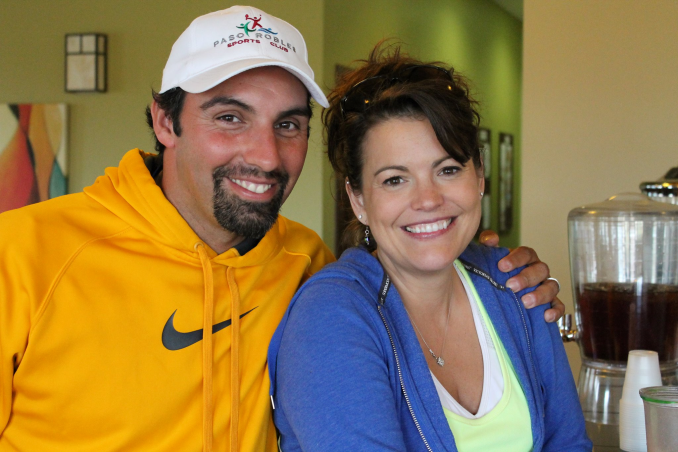 This tennis tip for a beginner is possibly the most important of all. Mistakes can only be corrected through the correct mentality and is a part of the game of tennis and life. There is no better teacher than your own mistakes and lessons learned from the mistakes made. Once you learn from your mistakes, work on improving them and eventually never make them again.
This tennis tip for a beginner is possibly the most important of all. Mistakes can only be corrected through the correct mentality and is a part of the game of tennis and life. There is no better teacher than your own mistakes and lessons learned from the mistakes made. Once you learn from your mistakes, work on improving them and eventually never make them again.
If you haven’t had a chance to try a lesson with me, please call me at 501-463-1321 to schedule a complimentary lesson. Mariano Parris, Tennis Director
Tennis Timing and How to Improve It
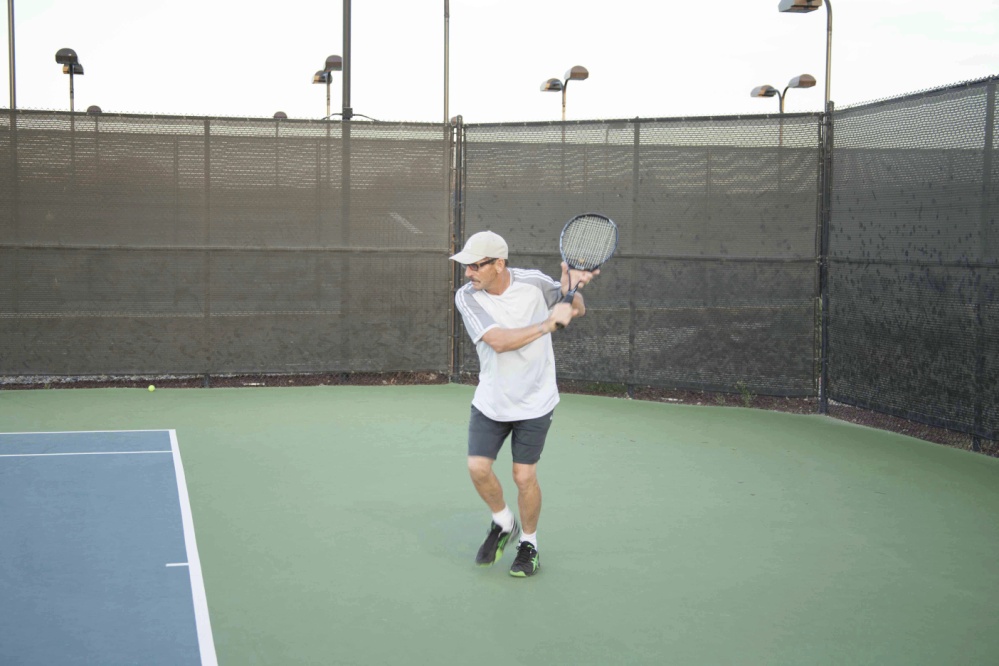 When you start playing tennis, most of us hit the ball late. The most common correction for this is to “take your racquet back” early, the theory being, it will give you more time. In theory, that’s correct, but in practice that doesn’t work very well. That’s because the player actually breaks down their timing by the sudden movement of bringing the racquet back. Coming to a full stop, then starting the forward swing from a still point requires a jerky movement with a lot of sudden force to get the racquet started again.
When you start playing tennis, most of us hit the ball late. The most common correction for this is to “take your racquet back” early, the theory being, it will give you more time. In theory, that’s correct, but in practice that doesn’t work very well. That’s because the player actually breaks down their timing by the sudden movement of bringing the racquet back. Coming to a full stop, then starting the forward swing from a still point requires a jerky movement with a lot of sudden force to get the racquet started again.
In reality, the swing of the groundstroke has three phases: 1) Quick preparation 2) Slower movement of the racquet in the phase between the backswing and the forward swing 3) Acceleration toward the ball.
In order to make all three phases work in harmony, the key part is the second part—it’s where we transition from backswing to forward swing. This part MUST be smooth, as that allows gradual acceleration toward the ball.
That’s why it is crucial that the second phase of the swing is smooth It will only be smooth if we don’t feel any time pressure. The more you are aware of that phase and how you go through it, the more you’ll be able to adjust your swing. In order to feel your way through this phase, you need to rally in easy conditions without playing points. Once you feel no time pressure, you’ll be able to relax. Once you relax, the swing will be much smoother and will generate much more force with less effort. Feeling no time pressure and hitting effortlessly will tell you that you’re on the right track. Timing exercises can greatly improve your game, especially since they take your focus away from technique, which can be so often the key limiting factor that holds you back.
An easy exercise to help with timing is something called “riding the ball” and the idea is that you move in the same way as the ball does. When the incoming ball is going down – bouncing – you’re bending your knees and “loading” energy in your legs, and when the ball is going up - on the rise-, you’re rising up with it and “unloading” to meet it and releasing energy into your stroke. By focusing more on this “loading” and “unloading” technique, you’ll also engage more power from your legs and you’ll be able to let go of some of the tension in your arms. This will enable you to find a more effortless swing which will eventually lead to more consistency and power. I’ve found it helpful to even say “bounce/rise” or the even easier, “down/up” to yourself when doing this exercise.
In the course of your rallies, adjust the rhythm of your movement to the ball’s flight. Sometimes you will hit the ball when it’s falling down, sometimes on top of the bounce, and sometimes when it’s rising— just like in a real match -, but strive with good footwork to match your preparation, timing and rhythm with the incoming ball’s flight to hit the ball as described above and see you how much your ball striking improves.
We all know timing and rhythm in tennis are not easy to master, and a lot technical errors that we see are actually caused by poor timing. Only when you have your full attention on the ball, will you be able to gauge the right time to go up against and hit it in the most comfortable and efficient way. It is crucial that you complement your technical skills with timing and rhythm exercises in order to achieve that effortless stroke we all strive for.
See Ya’ On The Courts, Tennis Pro Gary

